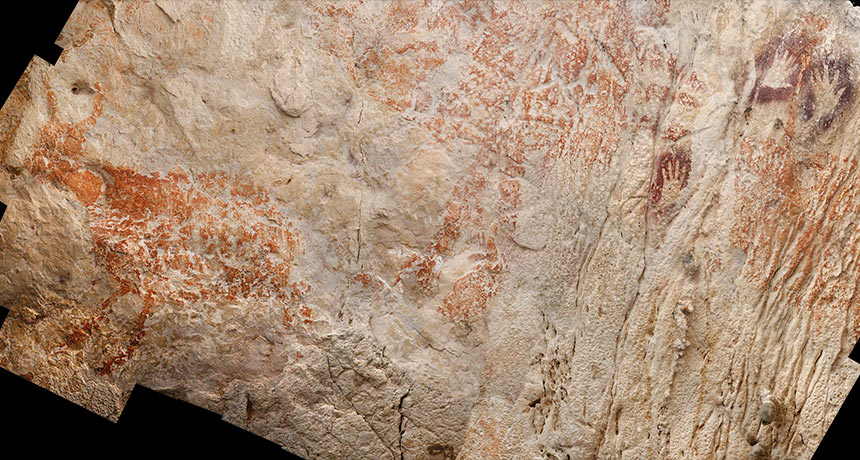Like Europe, Borneo hosted Stone Age cave artists
Animal figures and hand stencils are as old and complex as rock art found in Spain

OLD PAINT A reddish-orange animal, lower left, painted on a cave wall in Borneo dates to at least 40,000 years ago, scientists say.
Luc-Henri Fage